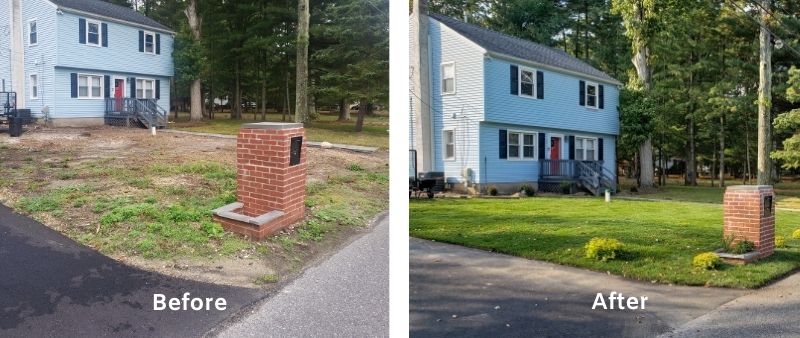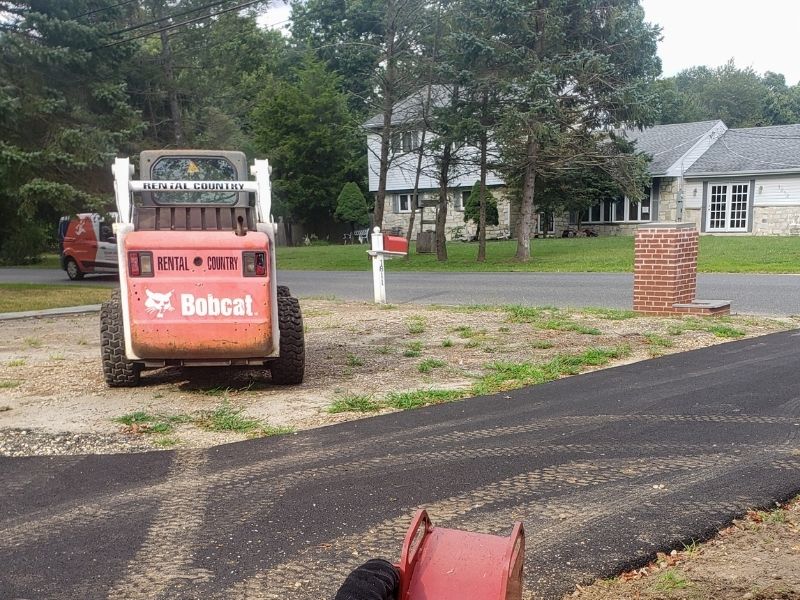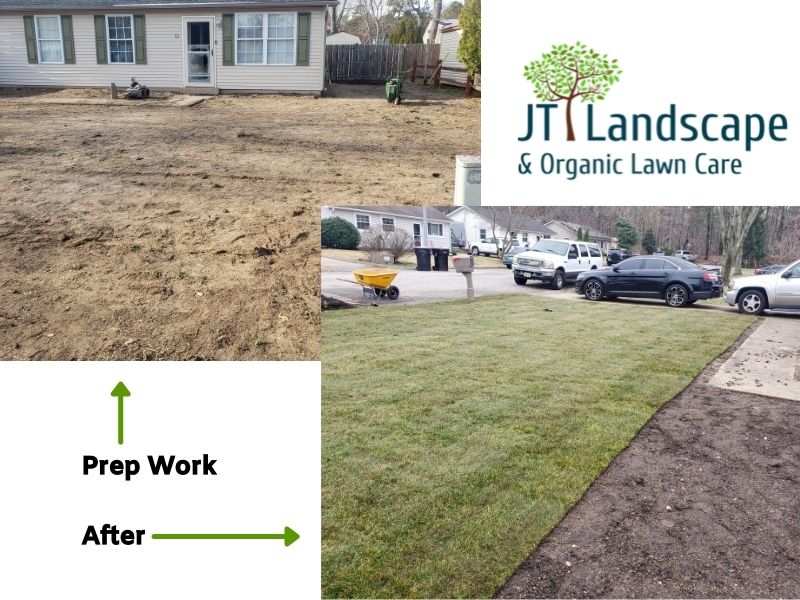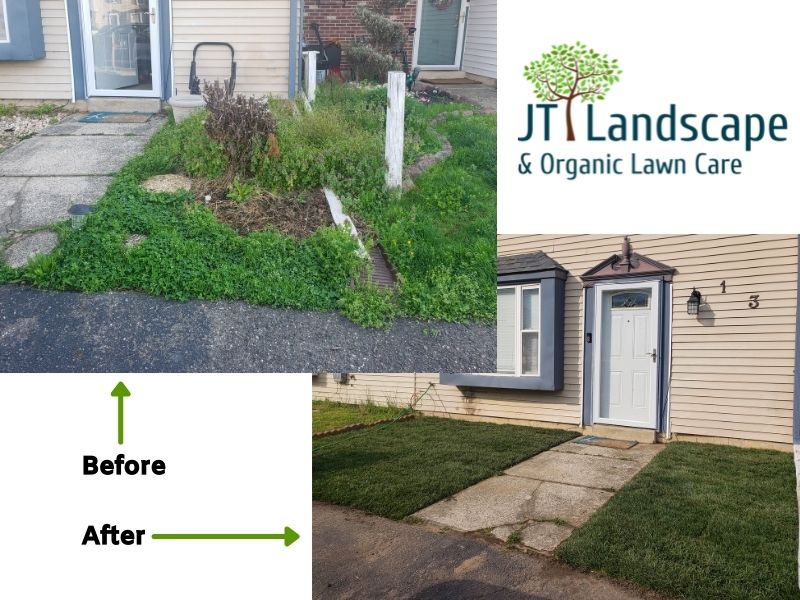If your lawn is suffering from thin or bare spots in the turf, sod installation can transform the entire appearance of your home in as little as 1-day!
Installing sod properly involves a lot of prep work and sod is heavy! It is a labor-intensive lawn and landscape service that is often best left to professional lawn care and landscaping services to perform.
Let’s go over some basic information you should know about sod whether you are considering installing sod yourself or hiring a local landscape company like us, JT Landscape & Organic Lawn Care. If your home or business is located East of Philadephia in Camden County, NJ, we’d love to answer any questions you have and provide you with an estimate to have us prepare your lawn to take the sod and then deliver and install the sod.

Introduction To Sod: An Alternative To Sowing Grass Seed
Sod is grass grown on sod farms that are then cut into smaller pieces that include the grass on top and soil with root system intact between. The roots of the sod keep the soil attached during transport. Most often sod is cut into 16″ x 24″ rectangles, but sizes do vary and for large applications, the sod is actually cut into large rolls and requires a special attachment on a skid steer to install.
The benefit of sod instead of sowing grass seed to remedy a thin or bare lawn is that the results are instant! As soon as the sod is installed, the lawn is completely covered in weed-free turf. It is definitely recommended to wait approximately 2 weeks to allow the sod’s root system to mesh with the existing soil beneath before resuming normal use of the lawn.

Watering Sod Is Just As Important As Watering Grass Seed & Young Grass
Choosing to install sod instead of sowing new grass seed is not a free pass from having to water! It is very important a strict watering plan is followed after sod is installed. Just like grass seed needs water to germinate and allow the root system to develop, the existing root system of the sod needs water to encourage it to dig deep and intertwine with the soil it was laid on in the lawn.

Prep Work Before Installing Sod
To ensure the success of a sod install, the most important thing (along with watering) is to prepare the soil the sod will be laid on to accept the sod. If you were to simply lay sod on top of existing thin or bare spots in your lawn, the majority of that sod would be completely dead within weeks, even if you water properly!
The proper way to prepare a lawn to accept sod is to remove any existing grass or weeds present and break up the soil surface to make it easier for the sod’s roots to enter the loose soil beneath. You also want to level out any uneven areas of the lawn as part of your prep work. The best tool for this job is a skid steer with a landscape rake attachment. The landscape rake will remove any existing vegetation, level out any bare spots, and as a bonus, also collect and remove any rocks it hits along the soil surface including a couple of inches below the surface.

Organic Soil Amendments & Sod Installation
We are JT Landscape & Organic Lawn Care after all! Our go-to organic soil amendment when installing sod is mushroom soil. Working mushroom soil into the existing soil of the lawn as you prepare it before installing the sod will introduce all kinds of beneficial bacteria and micro-nutrients that will help reduce the stress put on the sod as it is relocated to its new permanent home, your lawn!
Installing sod is something an ambitious, able-body homeowner can certainly handle themselves, but nothing makes a sod installation go smoother than years of experience. If you’d like to tap into our years of experience installing sod in Camden County, NJ, let’s get you a free estimate for sod installation today.
It’s highly recommended to fertilize your sod after installation! Learn more about our organic lawn care programs.
